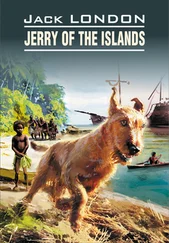Carlos Gamerro - The Islands
Здесь есть возможность читать онлайн «Carlos Gamerro - The Islands» весь текст электронной книги совершенно бесплатно (целиком полную версию без сокращений). В некоторых случаях можно слушать аудио, скачать через торрент в формате fb2 и присутствует краткое содержание. Год выпуска: 2012, Издательство: And Other Stories, Жанр: Современная проза, на английском языке. Описание произведения, (предисловие) а так же отзывы посетителей доступны на портале библиотеки ЛибКат.
- Название:The Islands
- Автор:
- Издательство:And Other Stories
- Жанр:
- Год:2012
- ISBN:нет данных
- Рейтинг книги:3 / 5. Голосов: 1
-
Избранное:Добавить в избранное
- Отзывы:
-
Ваша оценка:
- 60
- 1
- 2
- 3
- 4
- 5
The Islands: краткое содержание, описание и аннотация
Предлагаем к чтению аннотацию, описание, краткое содержание или предисловие (зависит от того, что написал сам автор книги «The Islands»). Если вы не нашли необходимую информацию о книге — напишите в комментариях, мы постараемся отыскать её.
A detective novel, a cyber-thriller, an inner-city road trip and a war memoir,
is a hilarious, devastating and dizzyingly surreal account of a history that remains all too raw.
The Islands — читать онлайн бесплатно полную книгу (весь текст) целиком
Ниже представлен текст книги, разбитый по страницам. Система сохранения места последней прочитанной страницы, позволяет с удобством читать онлайн бесплатно книгу «The Islands», без необходимости каждый раз заново искать на чём Вы остановились. Поставьте закладку, и сможете в любой момент перейти на страницу, на которой закончили чтение.
Интервал:
Закладка:
The next screen (I didn’t even bother to pee, I was so into it) would make Verraco the Commander of the Belgrano , a 10,650-tonne cruiser equipped with Sea Cat missiles and fifteen 15.6˝ cannon with a range of thirteen miles, and a crew of 1,093 men, escorted by two destroyers, the Piedra Blanca and the Hipólito Bouchard , both equipped with Exocet surface-to-air missiles with a range of twenty miles. For all three I used American ships from WWII, only switching flags and names (the cruiser had in fact fought the Japanese under the name ‘Phœnix’). At the first levels of the game Verraco would need only one or two flicks of the joystick executed with the reflexes of someone who’d just rolled up after a Sunday barbecue and a flagon of red in order to dodge the Mark 8 torpedoes that the 4,900-tonne, 103-crew English nuclear submarine Conqueror was firing at him. Then all three ships sprayed it with Hedgehog depth charges (so many that on-screen it looked like a peppered sausage) and I imported a little mushroom cloud from Global Nuclear Apocalypse to mark the moment when Conqueror exploded like a toad. Once I’ve finished with all this, I thought contentedly, I’ll have to make copies and send them to my friends. This one of the Belgrano , for example, would cause a sensation: I knew at least two or three survivors willing to sell their wife and kids for the chance to get their own back on the English sub. And, while I was at it, I threw in a gun-slinging torpedo duel between the San Luis and some English submarine or other, to give the only Argentinian sub a chance it never had in the war.
When you’re plugged into the computer, you sometimes hope you can match their staying power: computers never lose their glow, their reflexes or their operating speed, never start making mistakes. But, sooner or later, we biological organisms need to rest. We run down so fast … I’d started four hours earlier and I could already feel the first waves of fatigue behind my eyes, and my skull was beginning to reverberate like the inside of a bell. I tried not to take any notice and to concentrate on all I still had to do: I’d only just completed the first days of the war.
The third screen ought to have been a doddle, as I hardly had to alter any of the original outcomes; but I always find it easier to invent than to copy, maybe because the unpredictability of the video game is better suited to random outcomes and the open possibilities of the imagination than to reproducing the frozen past. Or maybe it’s just me. That 4th May Verraco had to sink the 4,100-tonne, 268-crew destroyer HMS Sheffield , equipped with Sea Dart missiles with a range of forty miles, sailing peacefully south-east of the Islands accompanied by the destroyers Coventry and Glasgow , unaware that a Neptune reconnaissance plane had spotted them and was transmitting the information to the Río Grande base, from where two of the Argentinian Air Force’s five Dassault-Breguet Super Étendard strike fighters would eventually take off. Flying at a speed of 1,200 kph, with a range of 600 km (they had to be refuelled in mid-air via a Lockheed C-130 Hercules), they remained within the radars’ dead zone before releasing the Exocet AM39 air-launched missiles they were carrying. I gave the Sheffield no chance to save itself; do what it might, one of the missiles would inevitably snap it in two like a baguette and send it to the bottom. I couldn’t run the risk of the most optimistic day of the war being ruined by a piece of clumsiness from Verraco (he, of course, would put it down to his innate skill: ‘Look, look, I never cock it up, I sink it every time — Yes!’). I completed that day made to the measure of our dreams with an attack by Sea Harriers on the airbase at Goose Green, from which, aiming the 35mm Œrlikon anti-aircraft batteries with average accuracy, it was possible to shoot them down in threes with zero risk, and for the rest of the screen I simply reproduced the outstanding action of the next two weeks, while giving Verraco enough leeway to improve on the results: so the Narwhal manages to down the two Sea Harriers and the marine-packed Sea King helicopter that attack it; the eighteen Skyhawks that leave San Julián manage to sink the Broadsword and the Coventry ; in the only naval surface battle of the whole war, in the San Carlos Strait, the freighter Isla de los Estados sinks the 3,250-tonne frigate Alacrity , equipped with MM38 Exocet and SAM Sea Cat missiles, torpedo launchers, a 115mm cannon and a Sea Lynx helicopter; squadron after squadron of Skyhawks attack the destroyers Glasgow and Brilliant , putting them out of action …
I leaned back in my swivel chair, laced my fingers together and pushed till I made them crack, then rubbed my closed eyes with my fists. Tiring work this, reinventing a war. My swollen bladder pissing just a dribble, my forehead pressing on the back of the hand that held a cigarette, against the cold surface of the tiles, I took to imagining that the cardboard match bobbing in the bowl below was an English ship foundering on the rough, yellow sea, and pitilessly directed the yellow stream at it, telling myself ‘If I sink it, everything will turn out exactly as I planned’; but the little fucker stayed afloat. It was almost two in the morning and the smoke from my cigarette reminded me once again of the emptiness in the pit of my stomach; I hadn’t eaten anything since the peanuts and crisps at the bar. I’d become so immersed in cyberspace that I believed its electronic stimuli were the only sustenance I needed; it was inconceivable to interrupt my trance and attend to the demands of the flesh. Wrong decision again: the smell of too many fags crushed against the aluminium of the ashtray, the smoke rising from my lungs to my brain, brought on first dizziness, then breathlessness, then nausea. It often happens when I’m nervous, it’s late and I’m alone, and I’ve smoked too many cigarettes on an empty stomach. I went to the fridge and took several gulps of ice-cold water, then opened a window and inhaled lungfuls of cold, damp air. I needed to go and lie down until it went, but I couldn’t afford to; so I stood there, clinging to the window, feeling the pin-pricks of cold sweat on my face, forcing myself to inhale and exhale until the nausea backed up down my throat to my chest, my stomach, and further down, where it couldn’t bother me any more. The big moment has come, I told myself, returning to my chair and sighing in contented resignation; you don’t have to put up with it any more: the English are about to land and you can’t be there to greet them in such a state of weakness — if not for yourself, at least do it for your country. Would that all the sacrifices it demands of us were as agreeable as this one, I purred to myself as I took everything I needed out of the drawer. For luck I combed a line on the map of Puerto Argentino to exactly the length and breadth of the airport runway and, pretending my nose was a Pucará landing on it, railed it in one. ‘Now, my English friends,’ I said to myself, my nose dribbling with delight, the white fire fizzing through my nerves like a powder trail, ‘bring on the little prince, come and get us.’
That 21st May is a storm of steel: 3,000 marines, from 40 and 45 Commando, and 2 and 3 Para, try to land and establish a beachhead in the San Carlos area at the far north of the strait, but they weren’t expecting a detachment of just sixty Argentinians to fight to the last man in the surrounding hills. It was just like the movies: Rambo mowing down several enemy platoons single-handed, each one approaching over the growing pile of corpses with a ‘Whassup man?’ and taking a string of bullets in the chest. With the first thousand marines out of the way, the screen switches to the ships hemmed into the narrow waters of the channel, at the mercy of the Argentinian planes, who don’t need to be asked twice: successive waves of IAI Daggers (the Israeli version of the Mirage) and US-built Douglas A-4 Skyhawk fighter-bombers attack the big ships, which, unable to manœuvre without crashing into each other, start blowing up and sinking one by one: in the front line the frigates, Ardent, Broadsword, Brilliant, Argonaut and Alacrity ; then the cruiser Antrim , and the frigates Yarmouth and Plymouth , the landing platform dock craft Fearless and Intrepid , and the 44,807-tonne troop transport Canberra . Several Sea Harriers (maximum twenty) and Sea King and Gazelle helicopters (maximum fifteen) are lost by the English in the aptly nicknamed ‘Bomb Alley’, and their ground forces, without any provisions or armaments other than what they’re carrying on their backs, are cut off by the Argentinian troops, who, arriving in ever greater numbers from Puerto Argentino and Puerto Howard, advance on them and drive them back into the sea. An act of suicide or desperation, the English landing has failed and once again they’ve lost half their fleet. Now things were really hotting up, and I combed another line on the edge of the keyboard and railed it through a fake hundred. I felt like having some fun and devoted the next screen to dogfights, probably the best thing in the game. I set the target as two ships: the destroyer Coventry , equipped with Sea Cat and Sea Dart missiles and 115mm and 20mm cannon, and the frigate Broadsword , armed with Sea Wolf, Exocet MM38 and 40-mm cannon; and around them, operating from the various aircraft carriers, the feared Harriers and Sea Harriers. Then I selected a gaming option that, instead of showing the planes on-screen, put me inside the cockpit, as in a flight simulator, and the enemy in front or behind, depending on luck. I patrol the area in my Mach 2.2 supersonic Mirage until I detect an enemy ship and prepare to attack: I easily dodge a Sea Dart but, before I get within range, the radar warns me of a Harrier behind me and I have to accelerate and climb to lose it (the higher the altitude, the greater the difference in speeds). Once I’m sure I’ve done it, I make a fresh approach and this time the Harrier appears in front and the dots of light from my cannon converge on his tail until smoke starts billowing out of it, and I finish him off with a nonchalant Sidewinder (the pilot ejects and is lost in the sea). But two more Harriers have taken his place (double drat!): one of them I foil by forcing him to fly so low that he eventually crashes into the waves, and the other, on picking me up behind him, tries the dirty trick of viffing (climbing vertically in mid-flight and decelerating, letting me zoom past below to get me in his sights and waste me at his leisure with his two missiles). But I manage to elude him by going into a corkscrew spin and, to make the most of the effect, I do the last thing he expects: I make a U-turn and fly at him, head-on. Without missiles, his machine guns aren’t up to much and my other Sidewinder puts him out of his confusion, so I can just drop altitude and release my bombs on the Coventry , which sinks in seconds flat. Then I jump to the cockpit of a Super Étendard, from which, after a complex approach to elude the radar, I manage to stick an Exocet into the troop carrier Atlantic Conveyor , equipped to serve as a third aircraft carrier, which, taking to the bottom three giant Chinook and six Wessex helicopters, tents, gear and portable runways, caused the English the biggest logistical setback of the war and delayed the attacks on Darwin and Puerto Argentino for several days. There were two of the original five Exocets left (I hadn’t called up any more, otherwise Verraco would even have launched them at the rubber dinghies) and I brought forward the attack on the aircraft carrier Invincible , so I could get it in the same screen. I had to get this one just right: it’s still the most controversial of the war (like a tennis match, each opponent keeps banging on about whether it was ‘In’ or ‘Out’ and neither is prepared to back down). Verraco himself was obsessed with the subject: in his wallet, alongside the photo of his wife and kids, he carried ‘a secret photo the English never disclosed’ showing the proud ship listing to port and almost disabled. Hundreds of times he’d shown it to me: a pewter sea, out of which pokes the tip of a table, and a cloud of grey ectoplasm shrouding the sky; but if anyone took it into their head to argue with him, he’d go blue in the face, his veins bulging, and he’d threaten them with council of war and court martial, even if they were civilians. So anyway, two Super Étendards and four Skyhawks pounce on it, and one of the Exocets breaches the hull amidships and the Skyhawks stick their 500-pound bombs into the hole, putting Invincible out of action and, while we’re at it, sinking it, just to prove that fiction can even outdo imagination.
Читать дальшеИнтервал:
Закладка:
Похожие книги на «The Islands»
Представляем Вашему вниманию похожие книги на «The Islands» списком для выбора. Мы отобрали схожую по названию и смыслу литературу в надежде предоставить читателям больше вариантов отыскать новые, интересные, ещё непрочитанные произведения.
Обсуждение, отзывы о книге «The Islands» и просто собственные мнения читателей. Оставьте ваши комментарии, напишите, что Вы думаете о произведении, его смысле или главных героях. Укажите что конкретно понравилось, а что нет, и почему Вы так считаете.











